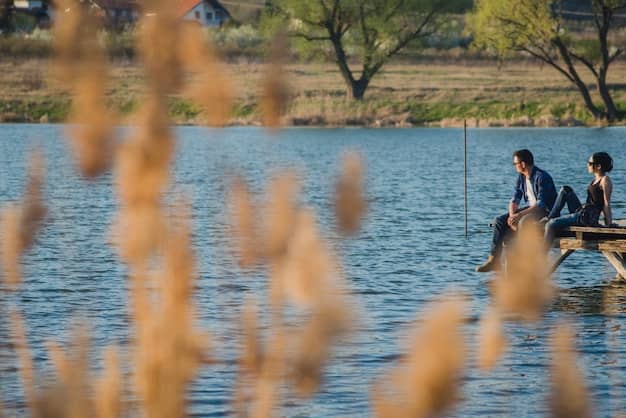Mastering the Basics of Fly Fishing

Fly-fishing is more than just a sport; it’s a journey into nature’s heart. Imagine standing knee-deep in a crystal-clear stream, the sun casting dappled shadows through the trees, and the gentle hum of the water as it flows around you. This is the world of fly fishing, a pastime that combines skill, patience, and a deep connection to the environment. Whether you’re a seasoned angler or a curious beginner, this article will guide you through the essentials of fly fishing, from the gear you need to the techniques that will help you succeed. Let’s dive in and explore the art and science of fly fishing.
Gear Up for Success
The right equipment is crucial for a successful fly fishing experience. At the heart of your gear is the fly rod, which comes in various lengths and weights. For beginners, a medium-action rod around 9 feet long is a versatile choice. Pair this with a matching reel that balances the rod and provides smooth line retrieval. Fly lines are another essential component, with weight-forward lines being a popular choice for their ease of casting.
Selecting the right flies is equally important. Flies mimic the insects and other prey that fish feed on, and they come in a dizzying array of shapes and sizes. Dry flies float on the water’s surface, while wet flies and nymphs sink below. Streamers, which imitate small fish, are also effective. Beginners should start with a basic assortment of flies to cover different fishing scenarios.
Understanding the different parts of a fly rod, reel, and line setup can clarify the selection process. For instance, the rod’s action, which refers to its flexibility, affects casting distance and accuracy. A medium-action rod offers a good balance for beginners. Similarly, a reel with a smooth drag system ensures that the line can be retrieved without jerks, which is crucial when fighting a fish. With the right gear in hand, you’re ready to tackle the next step: choosing the right fly.
Picking the Perfect Fly
Choosing the right fly can make or break your fishing trip. The type of fly you use depends on the fish you’re targeting and the environment you’re fishing in. Dry flies are ideal for surface-feeding fish, while wet flies and nymphs are better for fish feeding below the surface. Streamers are perfect for larger fish that prey on smaller fish.
Understanding the local insect life is key to selecting the right fly. Observing the water and noting what insects are present can guide your choice. For example, if you see mayflies hatching, a mayfly imitation fly will likely be effective. Matching the hatch, as this practice is known, increases your chances of success.
Practical examples can illustrate this concept. If you’re fishing in a fast-moving stream with lots of rocks, nymphs that mimic aquatic insects hiding among the rocks can be very effective. In contrast, in a calm lake, dry flies that resemble floating insects might be the best choice. By understanding the environment and the fish’s feeding habits, you can select the perfect fly for any situation.
Casting with Precision
To truly enjoy fly fishing, mastering casting techniques is a must. The overhead cast, with its smooth back-and-forth motion, is the most common technique. Start with the rod tip low, lift it smoothly, and then flick it forward, allowing the line to unfurl gracefully. This technique is essential for reaching distant targets and presenting the fly naturally.
The roll cast is another useful technique, especially in tight spaces with limited room for a backcast. This cast involves rolling the line out over the water’s surface, making it ideal for fishing in small streams or heavily vegetated areas. Practice this cast by forming a loop with the line and using a flicking motion to send it forward. It’s a versatile technique that can be a game-changer in tricky situations.
Accuracy and distance are crucial in fly fishing. To improve accuracy, focus on a specific target and practice casting to it repeatedly. For distance, ensure your casting stroke is smooth and powerful, with a firm stop at the end of the forward cast. Avoid common mistakes like snapping the wrist or rushing the cast, as these can lead to tangled lines and poor presentation. By refining these techniques, you’ll increase your chances of a successful catch.

Understanding Water and Fish
Reading water and understanding fish behaviour are vital skills for any fly fisher. Fish tend to congregate in specific habitats, such as pools, riffles, and undercut banks. Pools provide deep, slow-moving water where fish can rest, while riffles offer oxygen-rich water and abundant food. Recognising these habitats can significantly improve your fishing success.
Water currents play a significant role in fish behaviour. Fish often position themselves in areas where currents bring food to them, such as behind rocks or in eddies. Observing the water’s flow and identifying these spots can increase your chances of a successful catch. By understanding how fish use currents to their advantage, you can position yourself more effectively.
Recognising feeding patterns is also important. Fish are more active during certain times of the day, often feeding early in the morning or late in the evening. By understanding these patterns and adjusting your fishing times accordingly, you can improve your success rate. Visual aids like diagrams of fish habitats and water currents can enhance your understanding and help you apply these concepts in the field.
Staying Safe on the Water
Safety should always be a priority when fly fishing. Proper wading techniques are essential to avoid accidents. Move slowly and deliberately, feeling for stable footing with each step. Use a wading staff for added stability, especially in fast-moving water. This cautious approach can prevent slips and falls, ensuring a safer experience.
Weather considerations are also important. Always check the forecast before heading out and be prepared for sudden changes. Dress in layers to stay warm and dry, and wear a hat and sunglasses to protect against the sun’s glare. In case of thunderstorms, seek shelter immediately to avoid the risk of lightning strikes. Being prepared for weather changes can make your fishing trip more enjoyable and safe.
Protective gear is crucial for a safe fishing experience. Wear a life jacket when fishing in deep or fast-moving water, and use gloves to protect your hands from sharp hooks and fish spines. Learning how to safely handle fish is also important to avoid injury to both you and the fish. In case of emergencies, having a first aid kit and knowing basic first aid procedures can make a significant difference.
Respecting the Environment
Fly fishing etiquette is about more than just good manners; it’s about preserving the natural environment and respecting other anglers. Always give fellow anglers plenty of space and avoid casting into their fishing area. If you arrive at a popular spot and it’s crowded, consider moving to a different location. Respecting others’ space ensures a pleasant experience for everyone.
Preserving the environment is crucial for the future of fly fishing. Practice catch and release whenever possible, using barbless hooks to minimise harm to the fish. Handle fish gently and release them quickly to ensure their survival. Avoid trampling vegetation and be mindful of your impact on the ecosystem. These practices help maintain healthy fish populations and habitats.
Specific examples of good and bad etiquette can illustrate these principles. For instance, leaving trash behind or disturbing wildlife is unacceptable behaviour. On the other hand, picking up litter and reporting any environmental damage to local authorities demonstrates responsible angling. By following these guidelines, you contribute to the conservation of natural habitats and ensure that future generations can enjoy fly fishing.
Insights from Seasoned Anglers
Learning from experienced anglers can provide valuable insights and tips. Neville Mahon, a seasoned fisherman from New Zealand, emphasises the importance of patience and observation. He suggests spending time watching the water and understanding the fish’s behaviour before making a cast. This approach can significantly improve your chances of success.
Simon Perkins, President of Orvis, shares his deep-rooted connection to fly fishing. Growing up on the banks of the Battenkill River, he learned the craft from his father and grandfather. Simon advises beginners to focus on the basics and not get overwhelmed by the vast array of gear and techniques. He believes that mastering the fundamentals is key to becoming a successful angler.
Louis Cahill, another respected figure in the fly fishing community, offers a unique perspective on the sport. He notes that “far too often it’s an angler’s self-image that gets between them and the fish.” This insight highlights the importance of humility and a willingness to learn. Cahill also states, “I think those anglers learned long ago that they could learn something from anyone, if they listened.” This advice encourages anglers to remain open-minded and receptive to new ideas and techniques.
Connecting with the Community
Fly fishing is not just a solitary pursuit; it’s a community of like-minded individuals who share a passion for the sport. Numerous resources and communities are available to help you learn and connect with other anglers. Books and online forums offer a wealth of information on techniques, gear, and fishing locations. Engaging with these resources can enhance your knowledge and keep you updated on the latest trends and techniques in fly fishing.
Local clubs and workshops provide opportunities for hands-on learning and networking. Joining a club can introduce you to experienced anglers who can offer guidance and support. Workshops often cover specific topics, such as fly tying or casting techniques, allowing you to improve your skills in a focused setting. These in-person interactions can be invaluable for gaining practical experience and building relationships within the fly fishing community.
Online resources like YouTube channels and dedicated fly fishing websites are also valuable. These platforms offer instructional videos, gear reviews, and tips from experts. Engaging with these resources can enhance your knowledge and keep you updated on the latest trends and techniques in fly fishing. By connecting with the community, you can share your experiences, learn from others, and deepen your appreciation for the sport.
Embrace the Journey
Fly fishing is a rewarding and enriching pursuit that offers endless opportunities for learning and growth. As you embark on your fly fishing journey, remember that practice and patience are key. The more time you spend on the water, the more you’ll understand the nuances of the sport and develop your skills. Embrace the challenges and enjoy the process of becoming a better angler.
Continuous learning is essential for success in fly fishing. Stay curious and open to new techniques and ideas. Attend workshops, read books, and engage with the fly fishing community to expand your knowledge. Embrace the challenges and enjoy the process of becoming a better angler. The journey is just as rewarding as the destination.
Ultimately, fly fishing is about more than just catching fish. It’s about connecting with nature, finding peace and solitude, and experiencing the thrill of the chase. So grab your gear, head to your favourite fishing spot, and immerse yourself in the beauty and excitement of fly fishing. The journey is just as rewarding as the destination.


